- Home
- Arthur C. Clarke
The Star Page 2
The Star Read online
Page 2
This I could have accepted, hard though it is to look upon whole worlds and peoples thrown into the furnace. But there comes a point when even the deepest faith must falter, and now, as I look at the calculations lying before me, I know I have reached that point at last.
We could not tell, before we reached the nebula, how long ago the explosion took place. Now, from the astronomical evidence and the record in the rocks of that one surviving planet, I have been able to date it very exactly. I know in what year the light of this colossal conflagration reached our Earth. I know how brilliantly the supernova whose corpse now dwindles behind our speeding ship once shone in terrestrial skies. I know how it must have blazed low in the east before sunrise, like a beacon in that oriental dawn.
There can be no reasonable doubt: the ancient mystery is solved at last. Yet, oh God, there were so many stars you could have used. What was the need to give these people to the fire, the symbol of their passing might shine above Bethlehem?
What Goes Up
First published in The Magazine of Fantasy and Science Fiction, January 1956, as ‘What Goes up…’
Collected in Tales from the White Hart
Doug Richardson was really the American astronomer and SF writer (‘Philip Latham’) Robert S Richardson. I am indebted to him for showing me around the Mt Wilson Observatory and for introducing me to the idea of the ‘gravity well.’
One of the reasons why I am never too specific about the exact location of the ‘White Hart’ is, frankly, because we want to keep it to ourselves. This is not merely a dog-in-the-manger attitude: we have to do it in pure self-protection. As soon as it gets around that scientists, editors and science fiction writers are forgathering at some locality, the weirdest collection of visitors is likely to turn up. Peculiar people with new theories of the Universe, characters who have been ‘cleared’ by Dianetics (God knows what they were like before), intense ladies who are liable to go all clairvoyant after the fourth gin—these are the less exotic specimens. Worst of all, however, are the Flying Sorcerers: no cure short of mayhem has yet been discovered for them.
It was a black day when one of the leading exponents of the Flying Saucer religion discovered our hide-out and fell upon us with shrill cries of delight. Here, he obviously told himself, was fertile ground for his missionary activities. People who were already interested in space flight, and even wrote books and stories about its imminent achievement, would be a pushover. He opened his little black bag and produced the latest pile of sauceriana.
It was quite a collection. There were some interesting photographs of flying saucers made by an amateur astronomer who lives right beside Greenwich Observatory, and whose busy camera has recorded such a remarkable variety of spaceships, in all shapes and sizes, that one wonders what the professionals next door are doing for their salaries. Then there was a long statement from a gentleman in Texas who had just had a casual chat with the occupants of a saucer making a wayside halt on route to Venus. Language, it seemed, had presented no difficulties: it had taken about ten minutes of arm-waving to get from ‘Me—Man. This—Earth’ to highly esoteric information about the use of the fourth dimension in space travel.
The masterpiece, however, was an excited letter from a character in South Dakota who had actually been offered a lift in a flying saucer, and had been taken for a spin round the moon. He explained at some length how the saucer travelled by hauling itself along magnetic lines of force, rather like a spider going up its thread.
It was at this point that Harry Purvis rebelled. He had been listening with a professional pride to tales which even he would never have dared to spin, for he was an expert at detecting the yield point of his audience’s credulity. At the mention of lines of magnetic force, however, his scientific training overcame his frank admiration of these latter-day Munchausens, and he gave a snort of disgust.
‘That’s a lot of nonsense,’ he said. ‘I can prove it to you—magnetism’s my speciality.’
‘Last week,’ said Drew sweetly, as he filled two glasses of ale at once, ‘you said that crystal structure was your speciality.’
Harry gave him a superior smile.
‘I’m a general specialist,’ he said loftily. ‘To get back to where I was before that interruption, the point I want to make is that there’s no such thing as a line of magnetic force. It’s a mathematical fiction—exactly on a par with lines of longitude or latitude. Now if anyone said they’d invented a machine that worked by pulling itself along parallels of latitude, everybody would know that they were talking drivel. But because few people know much about magnetism, and it sounds rather mysterious, crackpots like this guy in South Dakota can get away with the tripe we’ve just been hearing.’
There’s one charming characteristic about the ‘White Hart’—we may fight among each other, but we show an impressive solidarity in times of crisis. Everyone felt that something had to be done about our unwelcome visitor: for one thing, he was interfering with the serious business of drinking. Fanaticism of any kind casts a gloom over the most festive assembly, and several of the regulars had shown signs of leaving despite the fact that it was still two hours to closing time.
So when Harry Purvis followed up his attack by concocting the most outrageous story that even he had ever presented in the ‘White Hart’, no one interrupted him or tried to expose the weak points in his narrative. We knew that Harry was acting for us all—he was fighting fire with fire, as it were. And we knew that he wasn’t expecting us to believe him (if indeed he ever did) so we just sat back and enjoyed ourselves.
‘If you want to know how to propel spaceships,’ began Harry, ‘and mark you, I’m not saying anything one way or the other about the existence of flying saucers—then you must forget magnetism. You must go straight to gravity—that’s the basic force of the Universe, after all. But it’s going to be a tricky force to handle, and if you don’t believe me just listen to what happened only last year to a scientist down in Australia. I shouldn’t really tell you this, I suppose, because I’m not sure of its security classification, but if there’s any trouble I’ll swear that I never said a word.
‘The Aussies, as you may know, have always been pretty hot on scientific research, and they had one team working on fast reactors—those house-broken atomic bombs which are so much more compact than the old uranium piles. The head of the group was a bright but rather impetuous young nuclear physicist I’ll call Dr Cavor. That, of course, wasn’t his real name, but it’s a very appropriate one. You’ll all recollect, I’m sure, the scientist Cavor in Wells’s First Men in the Moon, and the wonderful gravity-screening material Cavorite he discovered?
‘I’m afraid dear old Wells didn’t go into the question of Cavorite very thoroughly. As he put it, it was opaque to gravity just as a sheet of metal is opaque to light. Anything placed above a horizontal sheet of Cavorite, therefore, became weightless and floated up into space.
‘Well, it isn’t as simple as that. Weight represents energy—an enormous amount of it—which can’t just be destroyed without any fuss. You’d have to put a terrific amount of work into even a small object in order to make it weightless. Antigravity screens of the Cavorite type, therefore, are quite impossible—they’re in the same class as perpetual motion.’
‘Three of my friends have made perpetual-motion machines,’ began our unwanted visitor rather stuffily. Harry didn’t let him get any further: he just steamed on and ignored the interruption.
‘Now, our Australian Dr Cavor wasn’t searching for antigravity, or anything like it. In pure science, you can be pretty sure that nothing fundamental is ever discovered by anyone who’s actually looking for it—that’s half the fun of the game. Dr Cavor was interested in producing atomic power: what he found was antigravity. And it was quite some time before he realised that was what he’d discovered.
‘What happened, I gather, was this: the reactor was of a novel and rather daring design, and there was quite a possibility that it might blow up when the la
st pieces of fissile material were inserted. So it was assembled by remote control in one of Australia’s numerous convenient deserts, all the final operations being observed through TV sets.
‘Well, there was no explosion—which would have caused a nasty radioactive mess and wasted a lot of money, but wouldn’t have damaged anything except a lot of reputations. What actually happened was much more unexpected, and much more difficult to explain.
‘When the last piece of enriched uranium was inserted, the control rods pulled out, and the reactor brought up to criticality—everything went dead. The meters in the remote-control room, two miles from the reactor, all dropped back to zero. The TV screen went blank. Cavor and his colleagues waited for the bang, but there wasn’t one. They looked at each other for a moment with many wild surmises: then, without a word, they climbed up out of the buried control chamber.
‘The reactor building was completely unchanged: it sat out there in the desert, a commonplace cube of brick holding a million pounds’ worth of fissile material and several years of careful design and development. Cavor wasted no time: he grabbed the jeep, switched on a portable Geiger counter, and hurried off to see what had happened.
‘He recovered consciousness in hospital a couple of hours later. There was little wrong with him apart from a bad headache, which was nothing to the one his experiment was going to give him during the next few days. It seemed that when he got to within twenty feet of the reactor, his jeep had hit something with a terrific crash. Cavor had got tangled in the steering wheel and had a nice collection of bruises; the Geiger counter, oddly enough, was quite undamaged and was still clucking away quietly to itself, detecting no more than the normal cosmic-ray background.
‘Seen from a distance, it had looked a perfectly normal sort of accident that might have been caused by the jeep going into a rut. But Cavor hadn’t been driving all that fast, luckily for him, and anyway there was no rut at the scene of the crash. What the jeep had run into was something quite impossible. It was an invisible wall, apparently the lower rim of a hemispherical dome, which entirely surrounded the reactor. Stones thrown up in the air slid back to the ground along the surface of this dome, and it also extended underground as far as digging could be carried out. It seemed as if the reactor was at the exact centre of an impenetrable, spherical shell.
‘Of course, this was marvellous news and Cavor was out of bed in no time, scattering nurses in all directions. He had no idea what had happened, but it was a lot more exciting than the humdrum piece of nuclear engineering that had started the whole business.
‘By now you’re probably all wondering what the devil a sphere of force—as you science fiction writers would call it—has to do with antigravity. So I’ll jump several days and give you the answers that Cavor and his team discovered only after much hard work and the consumption of many gallons of that potent Australian beer.
The reactor when it had been energised, had somehow produced an antigravity field. All the matter inside a twenty-foot-radius sphere had been made weightless, and the enormous amount of energy needed to do this had been extracted, in some utterly mysterious manner, from the uranium in the pile. Calculations showed that the amount of energy in the reactor was just sufficient to do the job. Presumably the sphere of force would have been larger still if there had been more ergs available in the power source.
‘I can hear someone just waiting to ask a question, so I’ll anticipate them. Why didn’t this weightless sphere of earth and air float up into space? Well, the earth was held together by its cohesion, anyway, so there was no reason why it should go wandering off. As for the air, that was forced to stay inside the zone of zero gravity for a most surprising and subtle reason which leads me to the crux of this whole peculiar business.
‘Better fasten your seat belts for the next bit: we’ve got a bumpy passage ahead. Those of you who know something about potential theory won’t have any trouble, and I’ll do my best to make it as easy as I can for the rest.
‘People who talk glibly about antigravity seldom stop to consider its implication, so let’s look at a few fundamentals. As I’ve already said, weight implies energy—lots of it. That energy is entirely due to Earth’s gravity field. If you remove an object’s weight, that’s precisely equivalent to taking it clear outside Earth’s gravity. And any rocket engineer will tell you how much energy that requires.’
Harry turned to me and said: ‘There’s an analogy I’d like to borrow from one of your books, Arthur, that puts across the point I’m trying to make. You know—comparing the fight against Earth’s gravity to climbing out of a deep pit.’
‘You’re welcome,’ I said. ‘I pinched it from Doc Richardson, anyway.’
‘Oh,’ replied Harry. ‘I thought it was too good to be original. Well, here we go. If you hang on to this really very simple idea, you’ll be OK. To take an object clear away from the Earth requires as much work as lifting it four thousand miles against the steady drag of normal gravity. Now the matter inside Cavor’s zone of force was still on the Earth’s surface, but it was weightless. From the energy point of view, therefore, it was outside the Earth’s gravity field. It was inaccessible as if it was on top of a four-thousand-mile-high mountain.
‘Cavor could stand outside the antigravity zone and look into it from a point a few inches away. To cross those few inches, he would have to do as much work as if he climbed Everest seven hundred times. It wasn’t surprising that the jeep stopped in a hurry. No material object had stopped it, but from the point of view of dynamics it had run smack into a cliff four thousand miles high….
‘I can see some blank looks that are not entirely due to the lateness of the hour. Never mind: if you don’t get all this, just take my word for it. It won’t spoil your appreciation of what follows—at least, I hope not.
‘Cavor had realised at once that he had made one of the most important discoveries of the age, though it was some time before he worked out just what was going on. The final clue to the antigravitational nature of the field came when they shot a rifle bullet into it and observed the trajectory with a high-speed camera. Ingenious, don’t you think?
‘The next problem was to experiment with the field’s generator and to find just what had happened inside the reactor when it had been switched on. This was a problem indeed. The reactor was there in plain sight, twenty feet away. But to reach it would require slightly more energy than going to the moon….
‘Cavor was not disheartened by this, nor by the inexplicable failure of the reactor to respond to any of its remote controls. He theorised that it had been completely drained of energy, if one can use a rather misleading term, and that little if any power was needed to maintain the antigravity field once it had been set up. This was one of the many things that could only be determined by examination on the spot. So by hook or by crook, Dr Cavor would have to go there.
‘His first idea was to use an electrically driven trolley, supplied with power through cables which it dragged behind it as it advanced into the field. A hundred horsepower generator, running continuously for seventeen hours, would supply enough energy to take a man of average weight on the perilous twenty-foot journey. A velocity of slightly over a foot an hour did not seem much to boast about, until you remembered that advancing one foot into the antigravity field was equivalent to a two-hundred-mile vertical climb.
‘The theory was sound, but in practice the electric trolley wouldn’t work. It started to push its way into the field, but began to skid after it had traversed half an inch. The reason was obvious when one started to think about it. Though the power was there, the traction wasn’t. No wheeled vehicle could climb a gradient of two hundred miles per foot.
‘This minor setback did not discourage Dr Cavor. The answer, he realised at once, was to produce the traction at a point outside the field. When you wanted to lift a load vertically, you didn’t use a cart: you used a jack or a hydraulic ram.
‘The result of this argument was one of the oddest vehic
les ever built. A small but comfortable cage, containing sufficient provisions to last a man for several days, was mounted at the end of a twenty-foot-long horizontal girder. The whole device was supported off the ground by balloon tyres, and the theory was that the cage could be pushed right into the centre of the field by a machine which would remain outside its influence. After some thought, it was decided that the best prime mover would be the common or garden bulldozer.
‘A test was made with some rabbits in the passenger compartment—and I can’t help thinking that there was an interesting psychological point here. The experimenters were trying to get it both ways: as scientists they’d be pleased if their subjects got back alive, and as Australians they’d be just as happy if they got back dead. But perhaps I’m being a little too fanciful…. (You know, of course, how Australians feel about rabbits.)
‘The bulldozer chugged away hour after hour, forcing the weight of the girder and its insignificant pay load up the enormous gradient. It was an uncanny sight—all this energy being expended to move a couple of rabbits twenty feet across a perfectly horizontal plain. The subjects of the experiment could be observed throughout the operation: they seemed to be perfectly happy and quite unaware of their historic role.
‘The passenger compartment reached the centre of the field, was held there for an hour, and then the girder was slowly backed out again. The rabbits were alive, in good health, and to nobody’s particular surprise there were now six of them.
‘Dr Cavor, naturally, insisted on being the first human being to venture into a zero-gravity field. He loaded up the compartment with torsion balances, radiation detectors and periscopes so that he could look into the reactor when he finally got to it. Then he gave the signal, the bulldozer started chugging, and the strange journey began.

 Time's Eye
Time's Eye The Sentinel
The Sentinel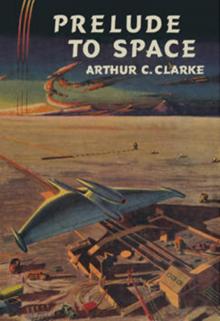 Prelude to Space
Prelude to Space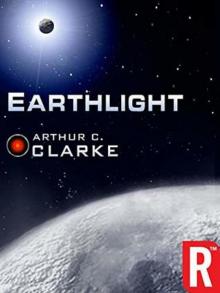 Earthlight (Arthur C. Clarke Collection)
Earthlight (Arthur C. Clarke Collection)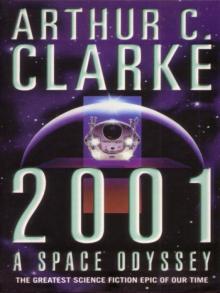 2001: A Space Odyssey
2001: A Space Odyssey Against the Fall of Night
Against the Fall of Night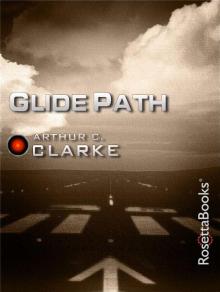 Glide Path
Glide Path The Lost Worlds of 2001
The Lost Worlds of 2001 The Trigger
The Trigger Reach for Tomorrow
Reach for Tomorrow Islands in the Sky
Islands in the Sky The Songs of Distant Earth
The Songs of Distant Earth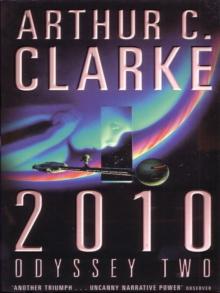 2010: Odyssey Two
2010: Odyssey Two Childhood's End
Childhood's End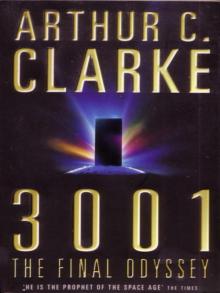 3001: The Final Odyssey
3001: The Final Odyssey The Fountains of Paradise
The Fountains of Paradise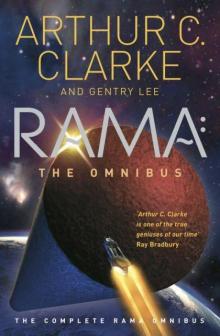 Rama: The Omnibus
Rama: The Omnibus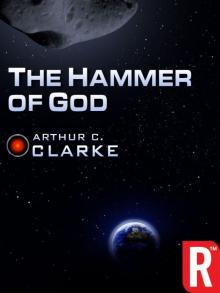 The Hammer of God
The Hammer of God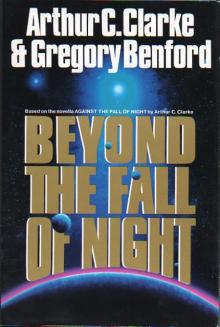 Beyond the Fall of Night
Beyond the Fall of Night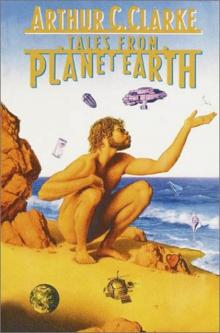 Tales From Planet Earth
Tales From Planet Earth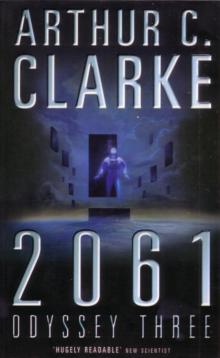 2061: Odyssey Three
2061: Odyssey Three Tales From the White Hart
Tales From the White Hart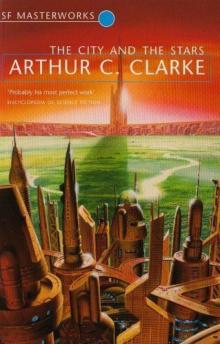 The City and the Stars/The Sands of Mars
The City and the Stars/The Sands of Mars The Star
The Star Imperial Earth
Imperial Earth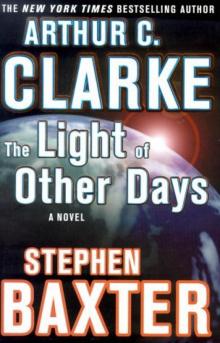 The Light of Other Days
The Light of Other Days Firstborn
Firstborn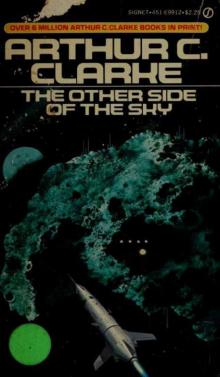 The Other Side of the Sky
The Other Side of the Sky Cradle
Cradle The Wind From the Sun
The Wind From the Sun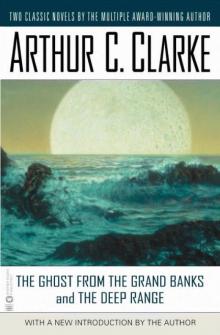 The Ghost From the Grand Banks and the Deep Range
The Ghost From the Grand Banks and the Deep Range The Deep Range
The Deep Range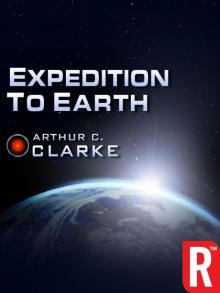 Expedition to Earth
Expedition to Earth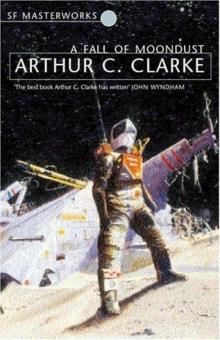 A Fall of Moondust
A Fall of Moondust Dolphin Island (Arthur C. Clarke Collection)
Dolphin Island (Arthur C. Clarke Collection) Richter 10
Richter 10 The City and the Stars
The City and the Stars Tales of Ten Worlds
Tales of Ten Worlds Dolphin Island
Dolphin Island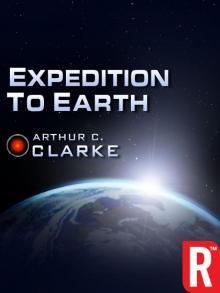 Expedition to Earth (Arthur C. Clarke Collection: Short Stories)
Expedition to Earth (Arthur C. Clarke Collection: Short Stories)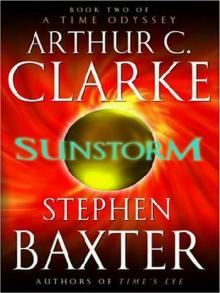 Sunstorm
Sunstorm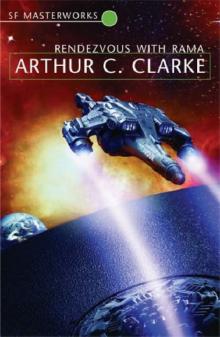 Rendezvous with Rama
Rendezvous with Rama The Collected Stories of Arthur C. Clarke
The Collected Stories of Arthur C. Clarke Trouble with the Natives
Trouble with the Natives Rama Revealed r-4
Rama Revealed r-4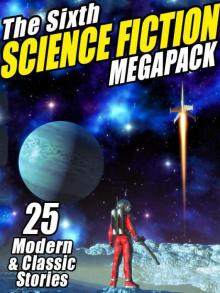 The Sixth Science Fiction Megapack
The Sixth Science Fiction Megapack Firstborn to-3
Firstborn to-3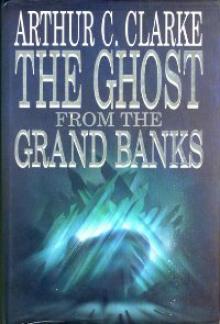 The Ghost from the Grand Banks
The Ghost from the Grand Banks Into the Comet
Into the Comet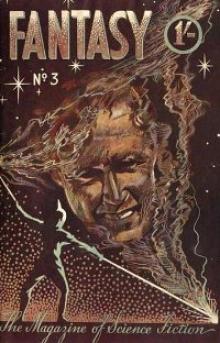 The Fires Within
The Fires Within 2061: Odyssey 3
2061: Odyssey 3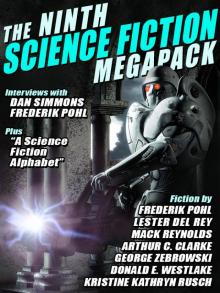 The Ninth Science Fiction Megapack
The Ninth Science Fiction Megapack The Coast of Coral
The Coast of Coral The Ghost from the Grand Banks (Arthur C. Clarke Collection)
The Ghost from the Grand Banks (Arthur C. Clarke Collection)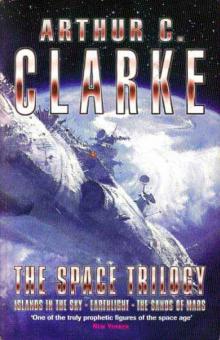 The Space Trilogy
The Space Trilogy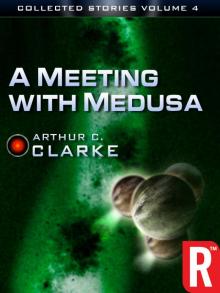 A Meeting With Medusa
A Meeting With Medusa 2001: A Space Odyssey (Arthur C. Clarke Collection: The Odyssey)
2001: A Space Odyssey (Arthur C. Clarke Collection: The Odyssey) Islands in the Sky (Arthur C. Clarke Collection)
Islands in the Sky (Arthur C. Clarke Collection) Rama II r-2
Rama II r-2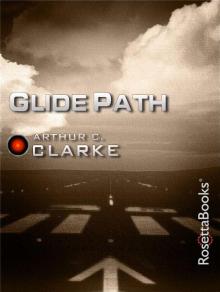 Glide Path (Arthur C. Clarke Collection)
Glide Path (Arthur C. Clarke Collection) The Sixth Science Fiction Megapack: 25 Classic and Modern Science Fiction Stories
The Sixth Science Fiction Megapack: 25 Classic and Modern Science Fiction Stories Tales from the White Hart (Arthur C. Clarke Collection: Short Stories)
Tales from the White Hart (Arthur C. Clarke Collection: Short Stories) The Reluctant Orchid
The Reluctant Orchid